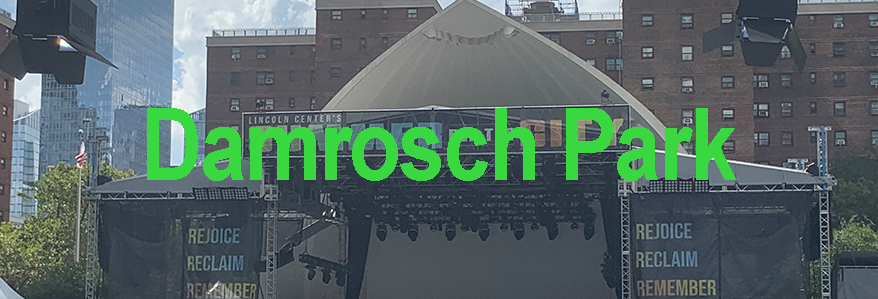LINCOLN CENTER FOR THE PERFORMING ARTS
DAMROSCH PARK
Date: 1962-1969
Architect: Dan Kiley
Primary Style: Modernist
READ the SOCIAL HISTORY of Damrosch Park
Damrosch Park
History –
- Designed by the architectural firm of Eggers & Higgins and the landscape architects Dan Kiley and the firm of Webel & Westermann, Damrosch Park was completed in 1969 along with Lincoln Center Plaza and the Metropolitan Opera House.
- The park was named for the German-American Damrosch family for their contributions to the study of music as composers and conductors.
- In 2016, Mathews Nielson Landscape Architects (MNLA) completed a redesign and restoration of Damrosch Park in an effort to retain the mid-century modern character of the public space while further accommodating the contemporary functions of the park.
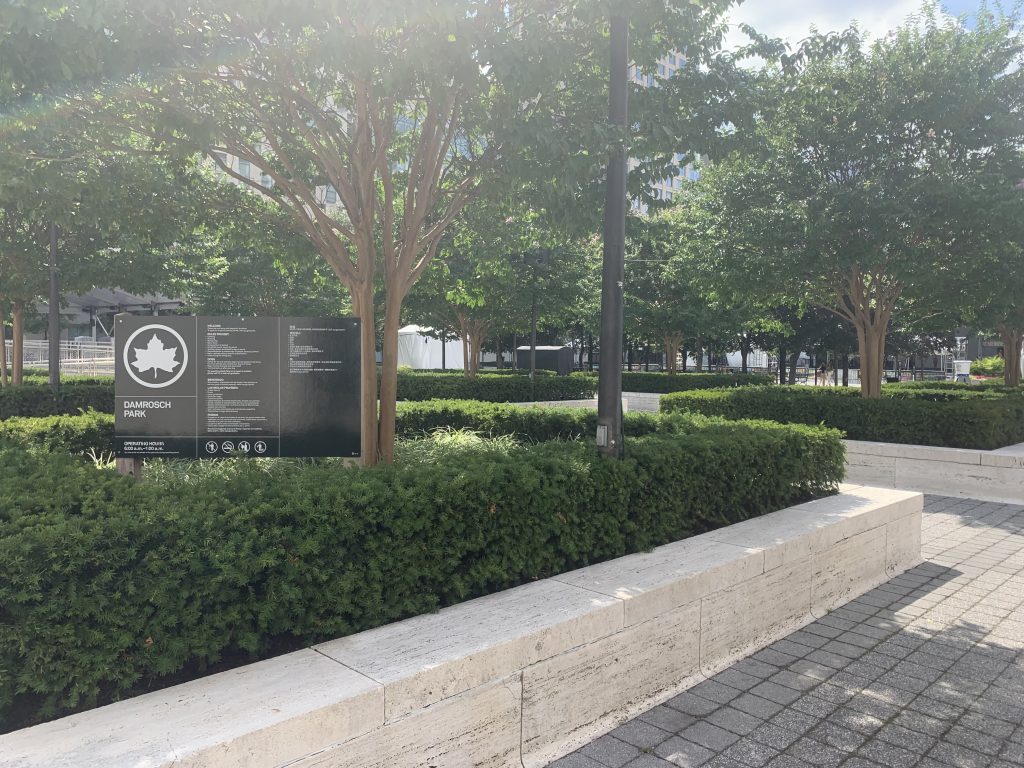
Original Design –
Due to confusion and controversy surrounding the design and use of public space within the Lincoln Center complex, the incorporation of green space was uncertain. However, Robert Moses, the Lincoln Center design team, and the New York City Department of Parks and Recreation ensured that this necessary open and multifunctional space remained within the scheme. This came in the form of Damrosch Park. With New York State Theater to its east, the Metropolitan Opera House to its north, and Sixty-second Street and Amsterdam Avenue to the south and west respectively, the park found its place perfectly within Lincoln Center for the Performing Arts. Working in conjunction, the architectural firm of Egger & Higgins and the landscape firms of Dan Kiley and Webel & Westermann created a 2.34-acre green space. The secluded park housed the Daniel and Florence Guggenheim Band Shell at its western end. The enclosure’s uniquely oblong character as a concrete structure provided a welcomed sense of character to the open space. Seating up to seventy-five musicians within the shell, the park itself could hold 4,500 outdoor concertgoers. To retain symmetry, the eastern end of the park was home to a reflecting pool, with the same footprint as the bandshell, lined with London plane trees. Damrosch Park, though convoluted in its origin, has been praised for the sense of life and intimacy that it brought to Lincoln Center for the Performing Arts.
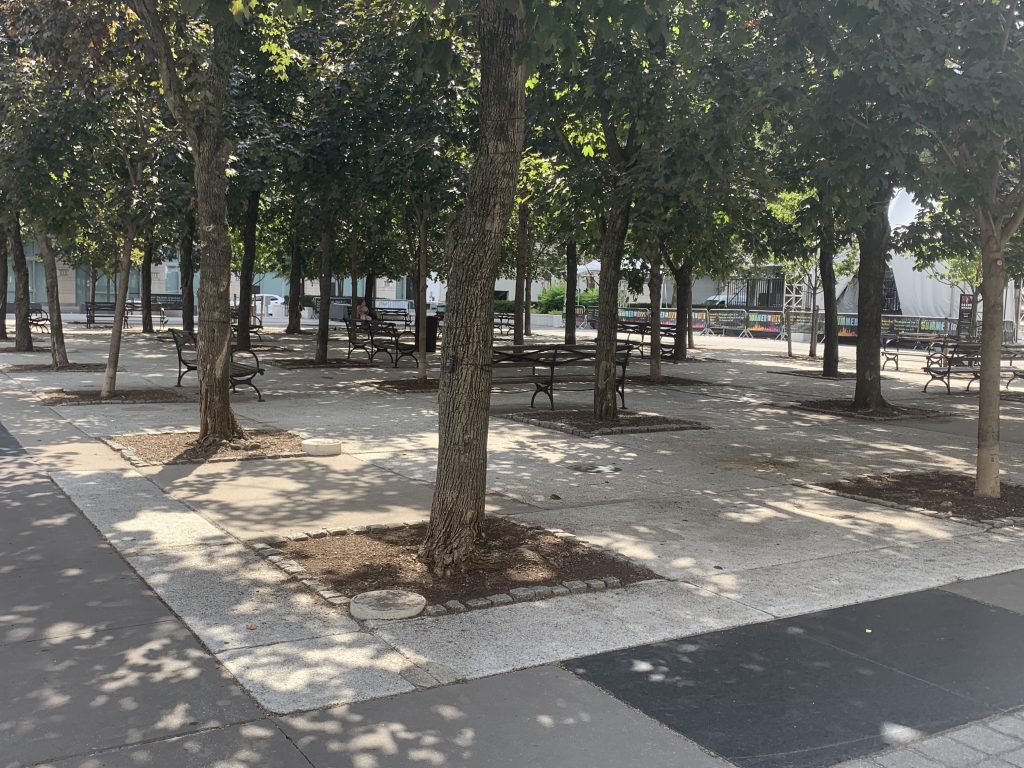
Past Renovations –
- Mathews Nielson Landscape Architects (MNLA), having already completed a successful restoration and renovation of the landscape design for Lincoln Center for the Performing Arts, were commissioned in 2016 to update Damrosch Park additionally, accounting for evolving usage and the landscape’s embodied mid-century heritage. MNLA was able to incorporate the existing layout, retaining the original walled planter boxes that have defined the space since 1969 while also further activating the area through innovative adjustments. This respectful renovation reinvigorated Damrosch Park as a public venue for the people of New York.
Further Reading –
- Stern, Robert A. M., et al. New York 1960: Architecture and Urbanism between the Second World War and the Bicentennial. Taschen, 1997.
- “Damrosch Park Restoration.” Projects – Damrosch Park Restoration – Mathews Nielsen Landscape Architects. Accessed August 29, 2020. https://www.mnlandscape.com/projects/damrosch_park_restoration.
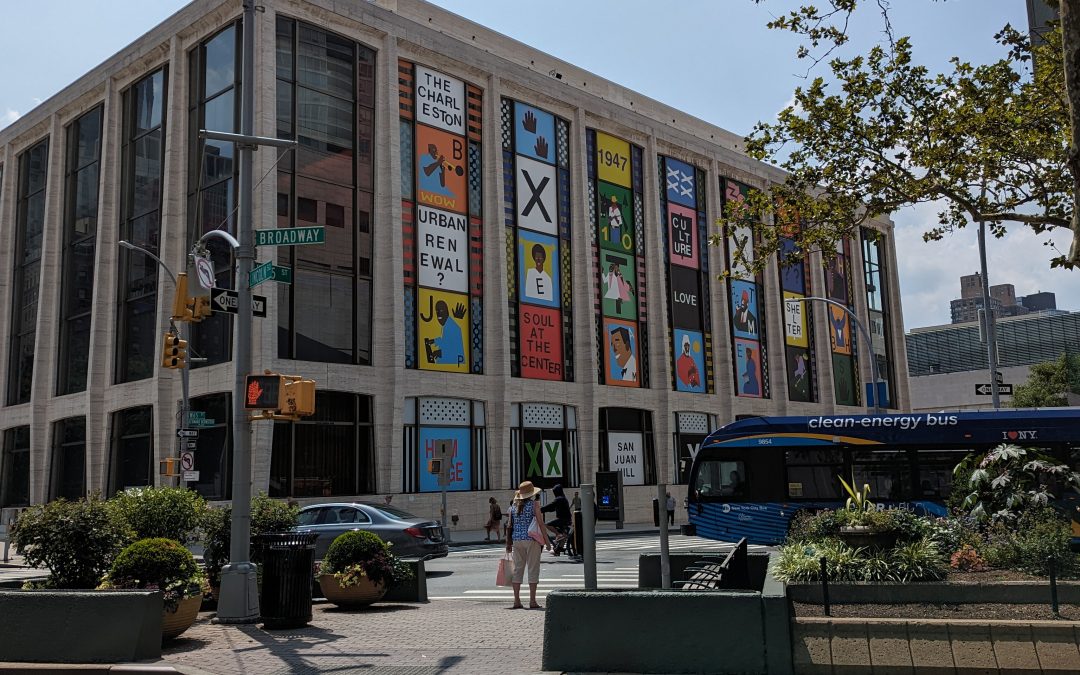
“San Juan Heal” Stands Out at Lincoln Center
by Sarah McCully It’s hard to miss the bright colors dotting David Geffen Hall’s typically neutral facade. Since early October of last year, the newly renovated concert hall’s northern windows have played host to a temporary art installation called “San Juan Heal” by...

Clouds de-Parting
Public art installations seem to be on attack, not just at Lincoln Center, but also, throughout the rest of New York City. The Museum of Modern Art (MoMA) has, for a long time, acted as a steward of Isamu Noguchi’s sculpture and other artwork. However, across the...
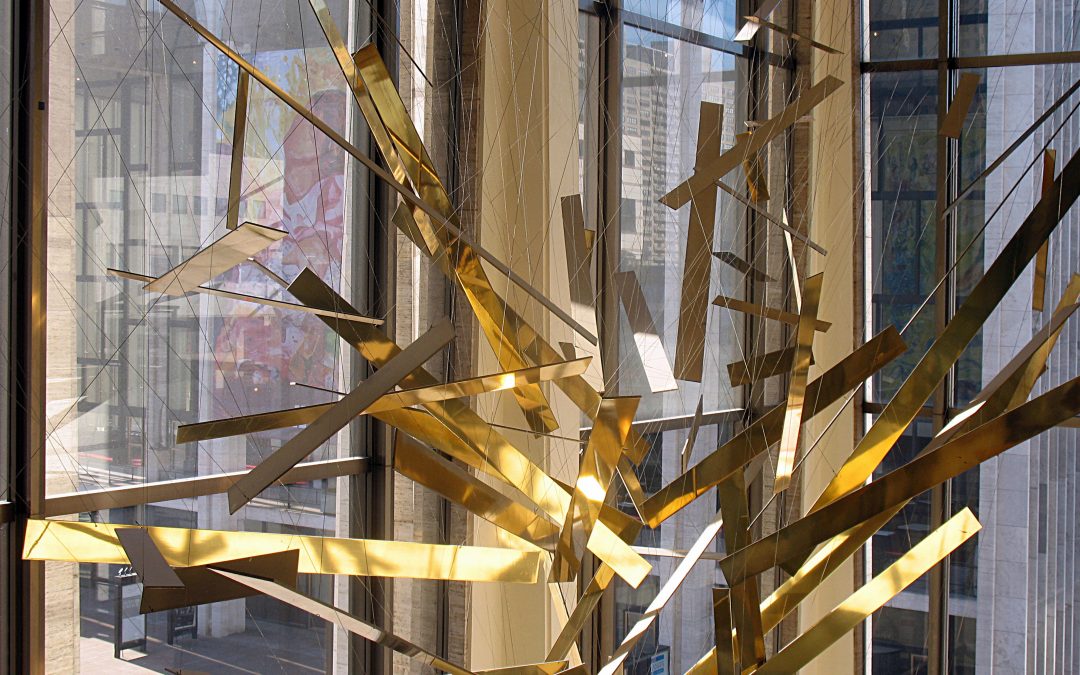
Seven to Save – UWS Gets Brassy with the PLNYS for the Richard Lippold Installation at Lincoln Center
Lincoln Center for the Performing Arts' Philharmonic Hall has felt empty since 2014, when Orpheus and Apollo, the shimmering and abstracted construction that has hung from the ceiling of the "grande promenade" since the hall was opened in 1962, was removed for...

Inside the Music Box
After some curveballs which were scrapped, The New York Philharmonic Hall, Avery Fischer Hall, David Geffen Hall at Lincoln Center is again in the news, and this time, it truly is what's on the inside that matters. Lincoln Center has announced that New York's own Tod...

